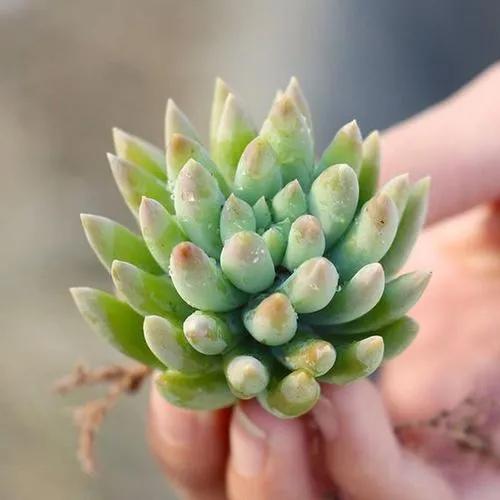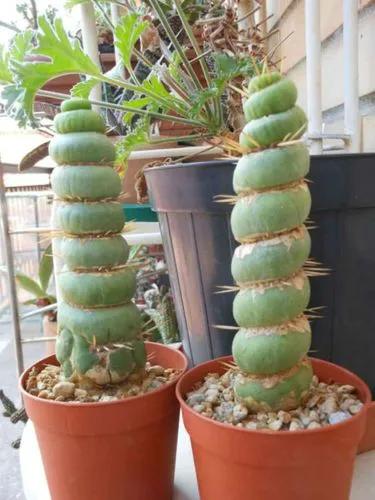Long known and very popular among succulent fanciers Gasteria carinata var. verrucosa (more commonly known as Gasteria verrucosa) is a peculiar looking plant with two-ranked, dull-green, leaves densely roughened with small, pearly-white excrescences and with grooved upper surfaces. It is probably the best-known example of a Gasteria species with very rough leaves. The name verrucosa, signifies warty or rough. The most popular form has the leaves being completely covered with white tubercles, and in some forms, the tubercles forming ornamental stripes of white bumps over both the ventral and dorsal surfaces. It is one of the most variable species in the genus. Variability includes a very large form (leaves up to 280 mm long) at Infanta (Breede River mouth) and a form with linear, channelled leaves at Herbertsdale. It is a small to medium-sized acaulescent succulent. It offsets freely from the base and soon forms a dense cluster with dull green speckled leaves. Dimension of the clumps 3 to 18 cm tall and 15 to 80 cm wide.
Gasteria Carinata Care
Gasteria Verrucosa



How to Care for the Plant

Water

Gasteria carinata ‘bredasdorp gasteria’ can be quite beautiful when it is well-taken care of. This succulent type needs typical watering as a other succulents. A watering method is very important to keep your bredasdorp gasteria healthy. It should not sit on a water, and an excess amount of water should be avoided.

Pruning

To prune a plant to encourage bushy new growth, snip off the dominant buds on select stems, staggering the cuts to encourage varied growth.

Fertilizer

Simply apply the fertilizer around the base of the plant, extending to the drip line. For vegetables, place the fertilizer in a strip parallel to the planting row. Water-soluble fertilizers are faster acting but must be applied more frequently. This method gives plants food while you water.

Sunlight

Needs at least 6-12 hours of diffused sunlight.

Soil

Rich, well-draining soil.

Temperature

During the winter months, water only when the soil becomes completely dry. Frost hardy to -1°C (Or less). It grows well in Mediterranean gardens where frost is not too severe.

Container

When choosing a pot, choose a pot that is 2.5-5 cm (1-2”) larger than the current size. Ceramic pots are porous which means your plants are less likely to experience root rot from overwatering. It also means you'll have to water more often. Plastic pots are lighter, less likely to break, and easier to clean.

Popularity

17,056 people already have this plant 1,186 people have added this plant to their wishlists
Discover more plants with the list below
Popular articles






